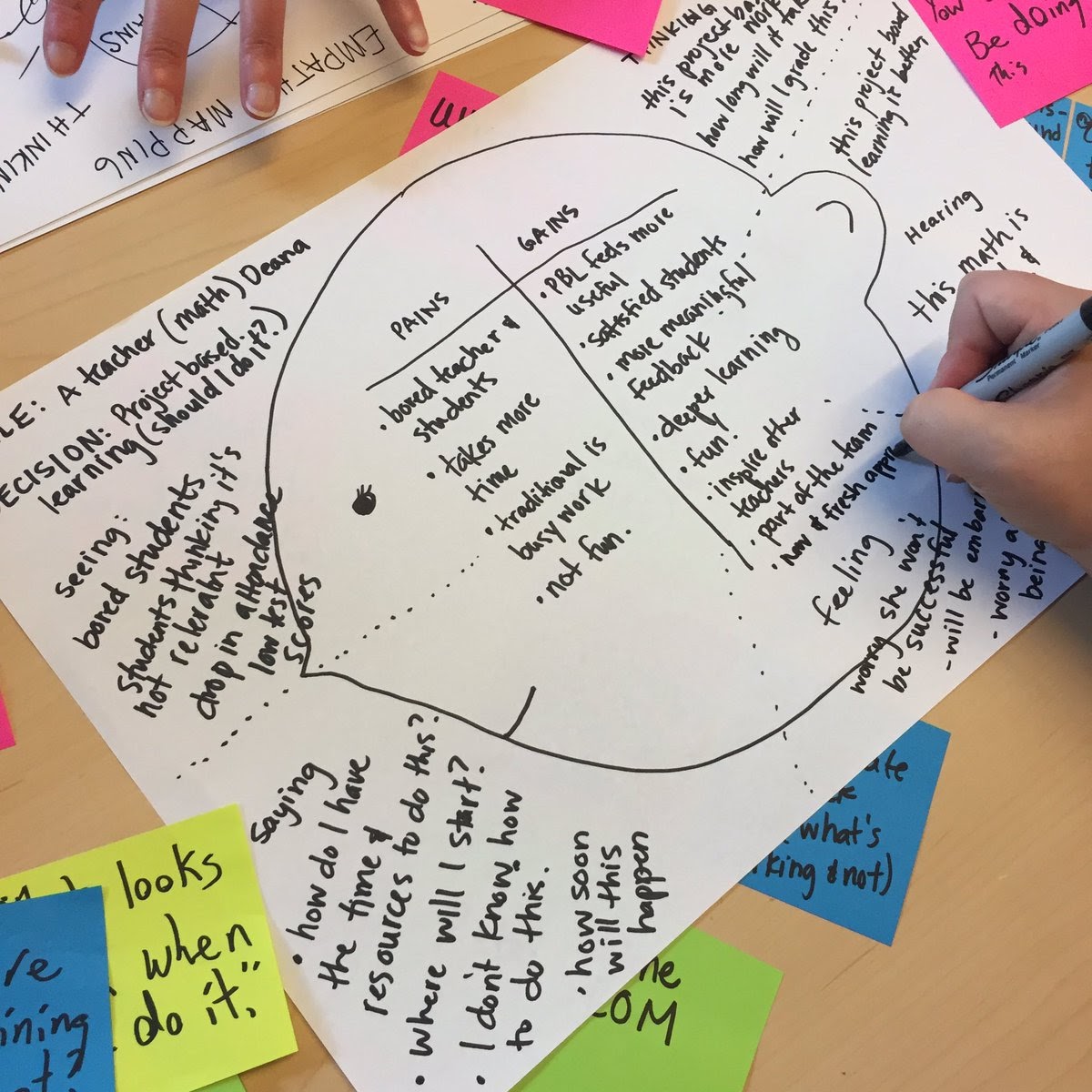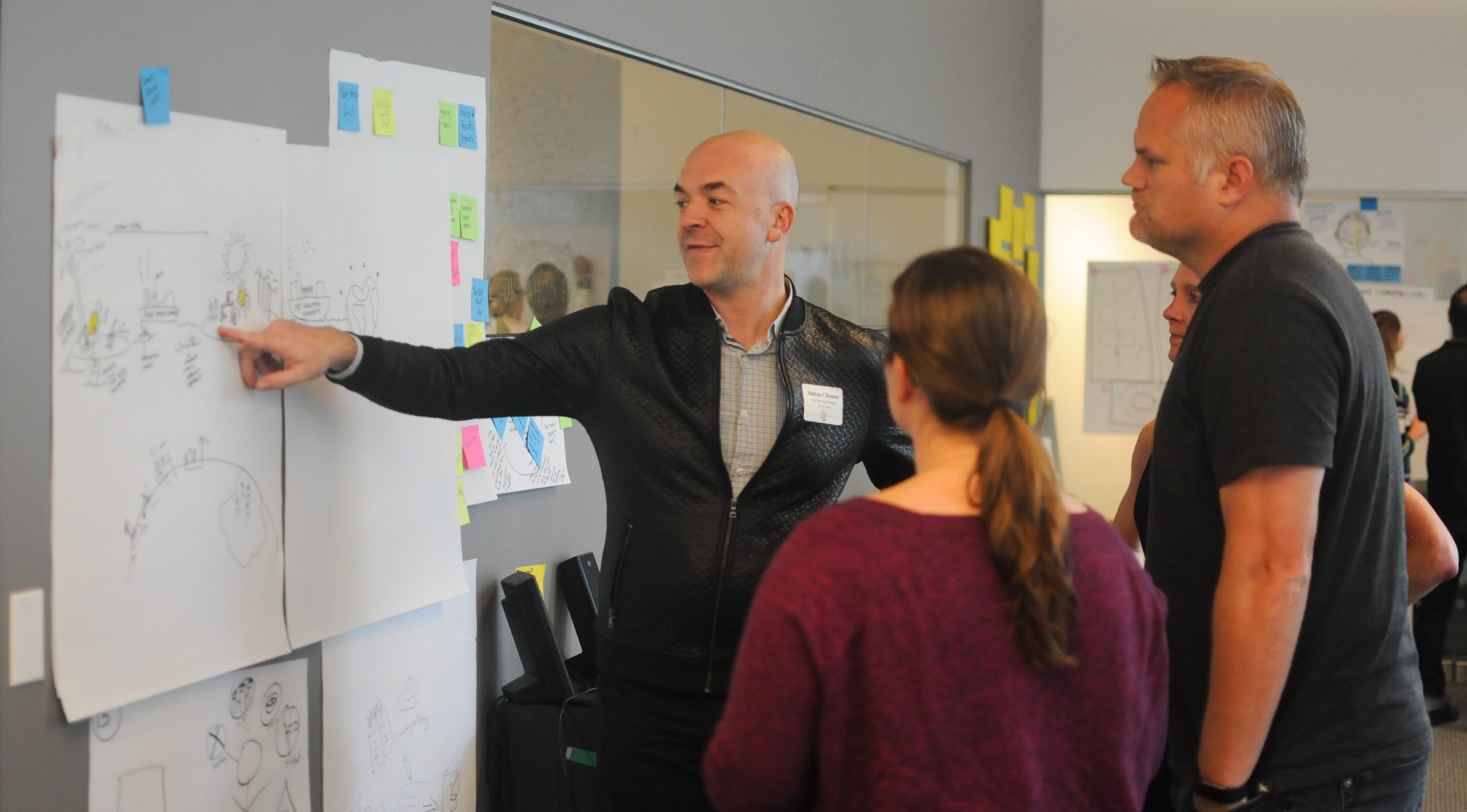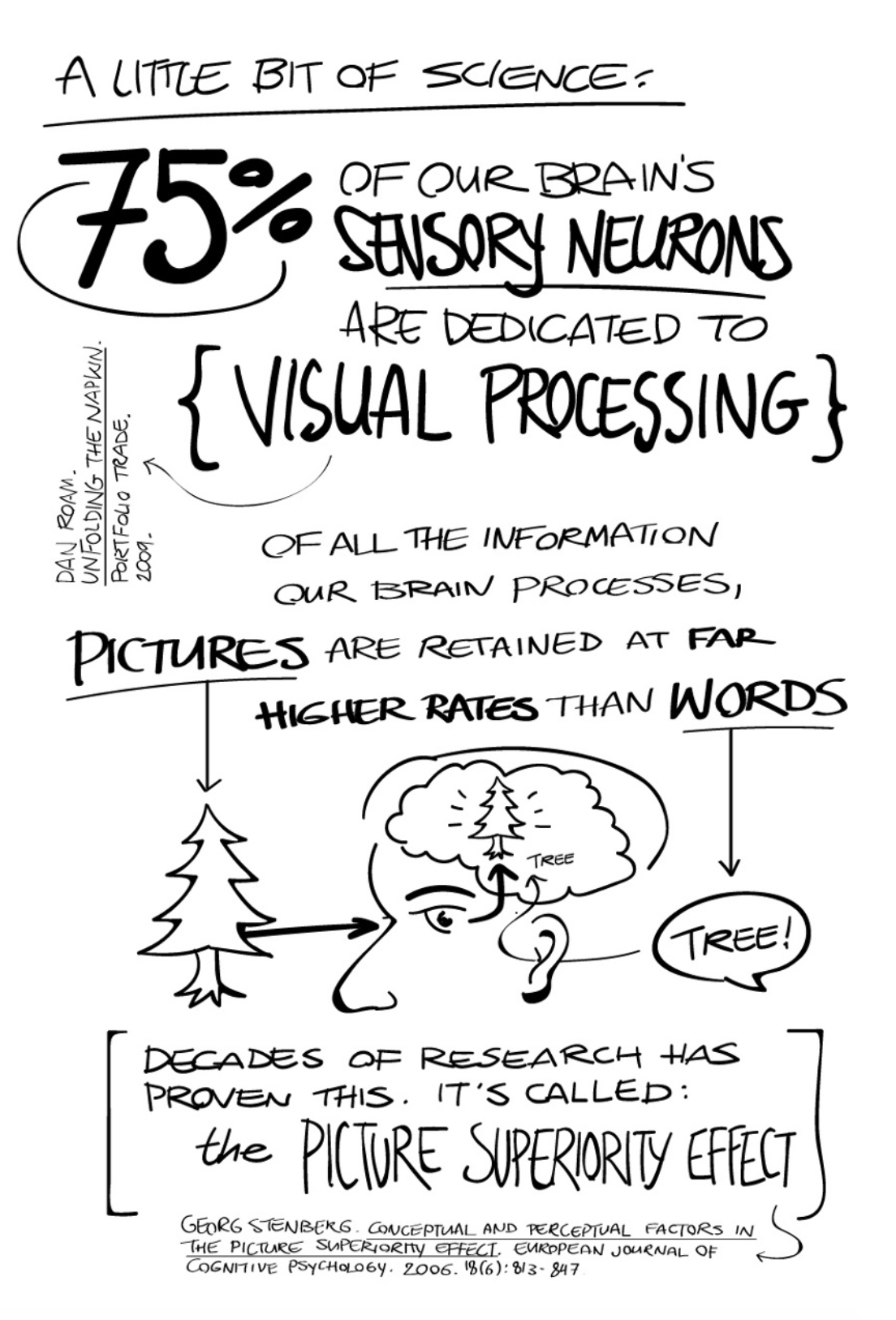Organizational confusion happens when you lose track of what, why, & how you work together. Visual Thinking helps you focus and plan your success story together.
Disruption and confusion have characterized the digital age. Companies that react quickly to changing markets and use modern digital tools to connect with their users will thrive. Meanwhile, organizations that are mired in confusion and overwork will fade away. A solid Visual Thinking practice can lead your team from the brink of disastrous confusion to a paradise of clarity and collaboration.
No matter your business, confusion is expensive. Often teams are so focused on the hard work of doing work that they don’t have the time or perspective to see the hurricane of confusion swirling around them. The costs of confusion can be measured in lost productivity, organizational redundancy, departmental infighting, siloed protectionism, plummeting morale, and loss of customer trust.
At XPLANE, the path to clarity starts with sketching on Post-its. With surprisingly simple tools Visual Thinking can bring clarity, break down barriers, and accelerate a team’s best work. At their inaugural Visual Thinking workshops, designers and consultants from XPLANE shared a rigorous Visual Thinking framework that teams in any field can use to map their own path to success.
Making real change is infinitely possible with the right story.”
Organizational confusion happens when teams lose track of their central narrative—the what, why and how they work together. Visual Thinking helps teams regroup on the core elements of their work and then plan their own success story together. Don’t worry; this isn’t some kumbaya-group-think-brainstorming. This is cold, hard science.
Creative Director, Tim May began the workshops with a neurological explanation of their approach. “Visual Thinking is the process of thinking and collaborating using tools and methods that leverage humans’ most powerful capability for understanding: visualization.”
Your visual cortex uses nearly ten times the processing power of your hearing. The human brain can identify drawn concepts in as little as 100 milliseconds. Ideas that are drawn are understood quicker and convey deeper meaning, like no other method can. Retention and recall of insights and decisions thrive as well, with Visual Thinking provoking deep hardwired connections in our brains.
Used as a discovery tool, a documentation method, or an activated planning strategy the output of Visual Thinking digs deeper and stays longer. What leader would say “no” to more efficient, effective sensemaking and problem solving?
Frameworks for successful teams
At the Visual Thinking 101 and 201 workshops, university teams and regional government planners sat next to high school principals and digital strategists—each was driven to build better connections with their users and solve real problems in meaningful ways. Despite the variety of professions and the deep expertise in the room, our group was laser focused one outcome; building out their strategic toolkits and improving their work with a proven process.

[Visual Thinking 101 participants facilitated discovery and problem solving exercises using real world scenarios. ]
Through two days of hands-on workshops, Tim and the XPLANE team walked groups through their process of creative thinking exercises, visualization techniques and group facilitation tactics. The process mixed individual reflection with small group work in a methodology that delivered sketched, visualized responses to the whole group.
With this pattern, groups could dive deeply into detailed exploration of an idea and capture the most important findings to present back to the full group. While a feeling of camaraderie began to build between the participants, patterns started to emerge and insights began to reveal themselves to the popcorn sound of “ah-ha!”
Could Visual Thinking help your team transform into an efficient and nimble modern organization? Probably. Don’t get lost in the hurricane of confusion. Here are three ways visual thinking can help your teams build clarity, understanding and a path to success.
1. Make room for great ideas
Meetings can be awful. Chances are, the more confusion your team is battling, the more awful meetings you’ll suffer through. The traditional meetings fail because they are top-down information dumps that share decisions after they’ve been made and often succumb to protectionist group-think—ignoring many of the best insights and ideas in the room.
“We use the power of Visual Thinking as a means to bridge organizational gaps, and to bring a variety of players to the collaborative table,” explains Tom Bennett, Mambo Media Senior Strategist.
There’s magic in a sticky note. When members of a group draw ideas on sticky notes and place them on a collaborative diagram, the ideas now belong to the group—they are released from the ownership and politics of the org-chart and become shared concepts and data points the group can consider together. Visual Thinking gives all great ideas a place in the conversation. As a result, it speeds discovery and decision making.
2. Find a clear way forward
When teams can only see a slice of the story your central narrative gets chopped and distorted. Use Visual Thinking to create a map of the current landscape of your work. Encourage teams to open up about what really happens during a day and where the pitfalls and pains are hiding.
Groups that can clearly see their blockers and have open discussions about them are more likely to engage in building lasting solutions to fix these problems. Collaboration peaks and insights start spilling out when the right mix of stakeholders are engaged in drawing out and mapping their struggles.
When your entire team can see the whole problem from the same perspective, the barriers to change melt away. Use the same mapping process to describe your team’s Shangri La, the idealistic perfect state. Teams come alive as they sketch and draw their dream, future state of work and real actionable ideas bubble out of the sketches and conversations.
The clarity and goodwill you’ve developed in this collaborative process will fuel accelerated sensemaking and problem solving. Knowing how far you are from your ideals will direct your team about what changes are needed and the next steps to take. With these future mapping techniques, a team can move from mired ambiguity to inspired clarity in surprisingly short time.
3. (Finally) deliver real innovation
While Visual Thinking can quickly bring a group to clear consensus, the most valuable output of the process are solutions that stick around. People support what they’ve helped to build. By gathering the right mix of stakeholders in a session and leading them through a shared journey, Visual Thinking can create new alliances and develop executive buy-on in ways your team could never imagine before.
A toothy, mission statement has a half-life. Over time the clarity and relevance of the statement breaks down and confusion returns. Instead, share Visual Thinking artifacts from sessions and discuss widely. These formalized illustrations tap back into the brain’s deep connection to the session work and keeps teams aligned through the process of change. With a shared illustration of success in hand, teams move forward with clarity of vision and can actually deliver the transformative work they envisioned.
Break out the sharpies and Post-its. It’s time to start sketching your way to a more productive, better aligned, modern business strategy with Visual Thinking.
Train your team in Visual Thinking!XPLANE offers workshops and training experiences for teams and individuals. Contact us to learn more. |
Nathan C Bowser is a Digital Marketing Manager at Mambo Media, where he helps his clients build meaningful connections with their customers through compelling content, strategic insights, and a passion for building delightful experiences. Follow @nathanc for PDX livetweets, photographs of sunsets, and user-centric marketing tips.

